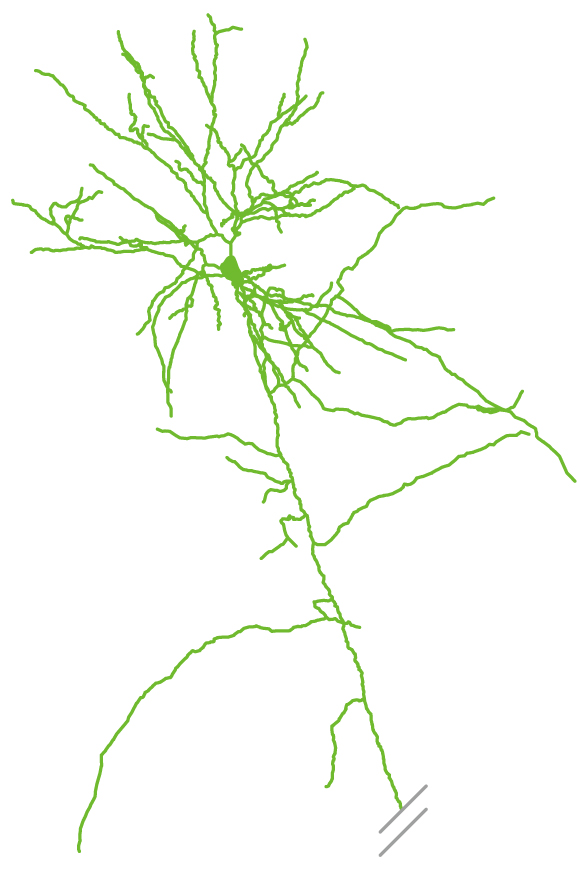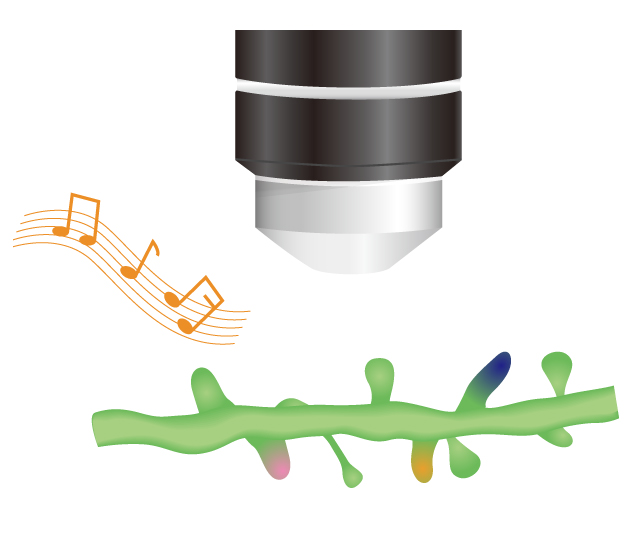
Scientists Use Neurolucida in Study of Calcium Signaling During Spontaneous Brain Activity
Sensory stimuli are all around us. Street traffic zooms by. A neighbor waves “hello.” A co-worker taps away at his keyboard. Each sight, sound, and motion ignite action within our brains. But even without all these stimuli, the brain is always active.
Known as “spontaneous activity,” the activity happening inside the brain in the absence of direct stimuli follows a pattern of up and down states that scientists say is essential for processing sensory signals. Spontaneous activity may also be involved in memory.
Scientists from the Brain Research Center at the Third Military Medical University, the Center for Integrated Protein Science, SyNergy Cluster, and the Institute of Neuroscience at the Technical University of Munich (Germany) are working on figuring out how the activity occurring in the brain during “spontaneous activity” compares with what goes on during periods of sensory stimuli. Specifically, they’re looking at calcium signaling – an important element in synaptic activity during periods of both sensory stimuli and spontaneous activity, that helps neurons transmit information to other parts of the brain and body.

A drawing of an L2 pyramidal neuron in the auditory cortex of a mouse brain rendered with Neurolucida. Biocytin-labeled neurons were visualized using the avidin:biotinylated horseradish peroxidase complex. Neurons were completely reconstructed in 3D with Neurolucida using an up-right Zeiss microscope with an oil immersion x100/1.4 numerical aperture objective.
In their study of calcium signaling in the dendritic spines of neurons in the auditory cortex of mice, the researchers used LOTOS-based two-photon calcium imaging in combination with electrophysiological recordings to assess activity. To further analyze spine positioning on dendritic arborizations, they created 3D reconstructions of biocytin-labeled neurons with Neurolucida.

A rendering of the active dendritic spines of an L2 pyramidal neuron in the mouse auditory cortex recorded with two-photon calcium imaging. In vivo calcium imaging was carried out using the LOw-power Temporal OverSampling (LOTOS) procedure with a custom-built acousto-optic deflector (AOD) two-photon microscope. Mice were stimulated with sound.
They observed that each neuron had at least 500 spines spread out across its entire dendritic arborization that showed active calcium signaling during periods of sensory stimulation, and that this same group of spines was active during spontaneous up states. According to the study, there was little activity among these spines during spontaneous down states.
“Our results provide direct insights into the activity in dendritic spines during cortical up states in the absence of sensory stimulation,” the authors say in their paper published June 27 in Cell Reports.
The researchers go on to say that the repeated activation of the spines active during sensory stimulation may be a cellular mechanism underlying memory consolidation in cortical neurons.
Chen, X., Rochefort, Nathalie L., Sakmann, B., & Konnerth, A. (2013). Reactivation of the Same Synapses during Spontaneous Up States and Sensory Stimuli. Cell Reports. June 27. doi: 10.1016/j.celrep.2013.05.042
Images courtesy of Xiaowei Chen, PhD


